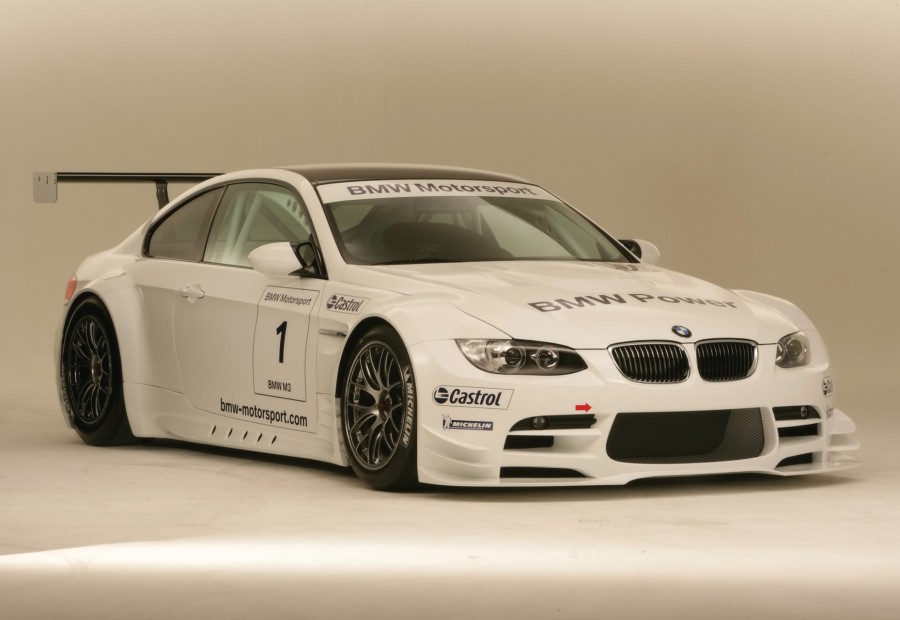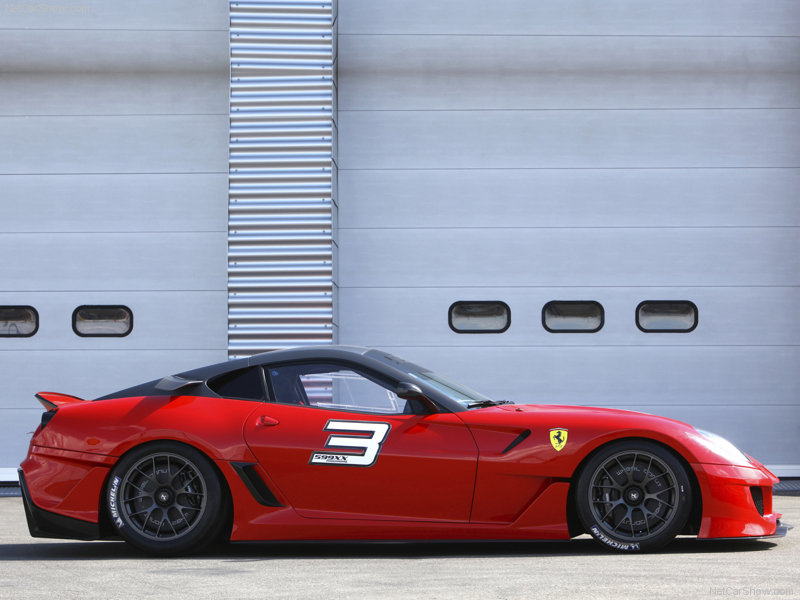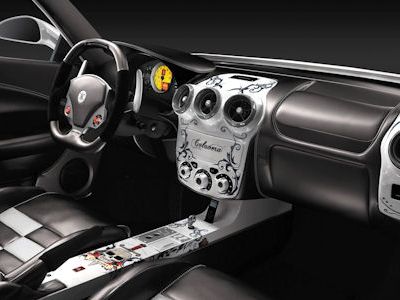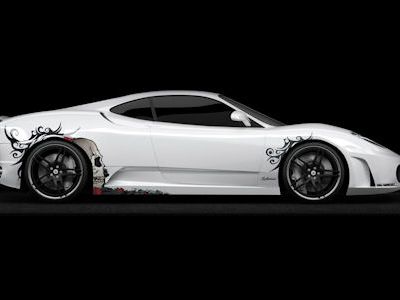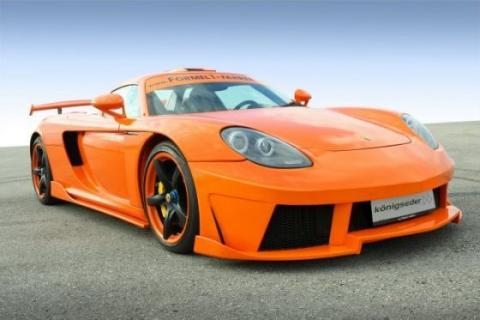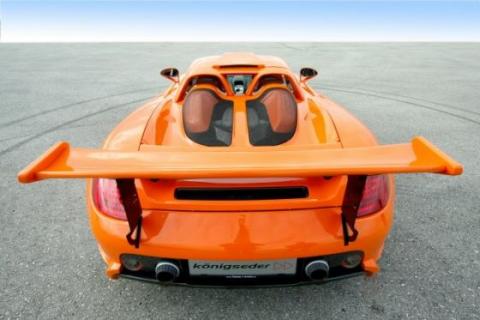Oh look, Ken Block's at it again. And this time you can say hello to his little friend...
This latest video might focus less on Block's otherworldly car control and take the series closer to the likes of Jackass, but it's still essential online viewing. For anyone yet to see them, the earlier videos (found on YouTube and the like) are also highly recommended!
Tuesday, September 29, 2009
Wednesday, September 23, 2009
Sunday, September 20, 2009
Friday, September 18, 2009
Wednesday, September 16, 2009
My cars: Sylva Leader 400
Intoxicating and uncompromsing, the Sylva Leader provided a tantalising taste of extreme sports

My girlfriend has a uniquely feminine way of describing cars. It revolves solely around colour, and it’s usually a hugely incomplete method of description, but in the case of my old Sylva Leader she may have been on to something. If you asked anyone to describe the car - even a bonefide petrolhead - the one word that usually came up was yellow. And it was indeed very, very yellow. And fast - as if Noddy and Big Ears had consumed way too much fairy dust one night and decided to try their hand at street racing with a homemade hotrod.
The Sylva certainly was homemade, and boy did it look it. The kit car industry has produced some staggering designs in recent years, but even in 1987 the Leader wasn’t one of its better offerings. The whole thing looked like a giant, slightly misshapen jelly mould, and yet - with it’s low stance and (yellow) roll bar - also strangely purposeful. This combination of the sublime and the ridiculous found many fans in the vicinity, and it never failed to raise a smile, even with typically disapproving audiences such as old ladies and the local constabulary.
The driving experience was always an event. It took several pumps of the throttle to prime the two huge Delhorto carburettors used to feed its 1800cc Lancia heart, but it was worth it. If you were lucky the push button starter on the left hand side of the dash would overcome the engine’s Latin temperament and it would fire with a delicious bark. Prod the throttle and the big carbs would let out a snort, while the side exit exhaust, barely two feet beneath your right ear, emitted a fiery rasp. To this day it remains the best four cylinder soundtrack I’ve ever heard.

On the road its performance was electric. The 150bhp produced by the Italian twin cam might not sound like much, but, with only 650kg to propel, it equated to around 230bhp/ton, which is 911 turbo territory. The brick-like aerodynamics may have blunted its potency at higher speeds, but this was a bit irrelevant for a speccy four eyes like myself, because at around 60mph (with next to no windscreen) my glasses began to take off. Factor in the lack of doors, a hood of any type, any security or anything remotely resembling a boot and the Leader’s everyday credentials began to look shaky.
As a general rule all Sylvas, and most Leaders included, are very fine handling cars, but some DIY suspension mods carried out by a previous owner had left mine with a few unwanted traits. The rock hard rear suspension made the car skittish to say the least, and loss of traction on bumpy roads was a sudden and frequently violent experience. The direct, but surprisingly numb steering, meanwhile, gave little indication of impending doom through its overly weighty helm. It made any of the TVRs I’ve since driven seem a bit, well, safe, but it was undoubtedly exciting and every journey bore a sense of occasion.
Another idiosyncrasy was the car’s braking system. Not only was it un-servoed, which takes some getting used to in this day and age, but it was well overdue for an overhaul. Even if you could summon the gargantuan force needed to operate the hydraulics I’m not convinced they would have done much good. To compound matters, the previous owners’ home engineering periodically reared its ugly head. One hot day the outer part of the throttle cable melted (later discovered to be a bicycle gear cable run perilously close to the exhaust manifold); only to solidify at the extreme end of its travel. Cue a flurry of screaming revs and wheel spin that sent me snaking down a narrow (but mercifully straight) country lane for a few seconds before I brought the clutch in. And, if experiences like that weren’t enough, an unidentified misfire would routinely kick in at high revs, and on occasions the car would simply fail to start altogether.

So does this mean the Leader was a bad car? Well, no, not in the slightest actually. It wasn’t even a particularly bad example. The body and chassis were pristine (if somewhat yellow), the engine performed spectacularly when niggling faults weren’t hampering it, and a damper change and some new rubber would have gone a long way to sorting out the handling. It was a few weekends work away from being a superb track day toy. Sadly, in truth, it was another car that succumbed to my learning curve. At the time I had no garage to work on it and little in the way of tools or practical experience.
The Leader was also a victim of its own appeal. The experience of blasting down country lanes with the glorious twin cam on full song, the hedges accelerating past your ear and the sheer force pulling you back into the seat was intoxicating. I wanted more, but even in pristine condition the Leader would have been a little extreme. What I needed was a car that could deliver the same hit, but also justify itself with fair weather trips to the office and the occasional weekend away. So I did what any sensible young man would do; I bought a TVR.

My girlfriend has a uniquely feminine way of describing cars. It revolves solely around colour, and it’s usually a hugely incomplete method of description, but in the case of my old Sylva Leader she may have been on to something. If you asked anyone to describe the car - even a bonefide petrolhead - the one word that usually came up was yellow. And it was indeed very, very yellow. And fast - as if Noddy and Big Ears had consumed way too much fairy dust one night and decided to try their hand at street racing with a homemade hotrod.
The Sylva certainly was homemade, and boy did it look it. The kit car industry has produced some staggering designs in recent years, but even in 1987 the Leader wasn’t one of its better offerings. The whole thing looked like a giant, slightly misshapen jelly mould, and yet - with it’s low stance and (yellow) roll bar - also strangely purposeful. This combination of the sublime and the ridiculous found many fans in the vicinity, and it never failed to raise a smile, even with typically disapproving audiences such as old ladies and the local constabulary.
The driving experience was always an event. It took several pumps of the throttle to prime the two huge Delhorto carburettors used to feed its 1800cc Lancia heart, but it was worth it. If you were lucky the push button starter on the left hand side of the dash would overcome the engine’s Latin temperament and it would fire with a delicious bark. Prod the throttle and the big carbs would let out a snort, while the side exit exhaust, barely two feet beneath your right ear, emitted a fiery rasp. To this day it remains the best four cylinder soundtrack I’ve ever heard.

On the road its performance was electric. The 150bhp produced by the Italian twin cam might not sound like much, but, with only 650kg to propel, it equated to around 230bhp/ton, which is 911 turbo territory. The brick-like aerodynamics may have blunted its potency at higher speeds, but this was a bit irrelevant for a speccy four eyes like myself, because at around 60mph (with next to no windscreen) my glasses began to take off. Factor in the lack of doors, a hood of any type, any security or anything remotely resembling a boot and the Leader’s everyday credentials began to look shaky.
As a general rule all Sylvas, and most Leaders included, are very fine handling cars, but some DIY suspension mods carried out by a previous owner had left mine with a few unwanted traits. The rock hard rear suspension made the car skittish to say the least, and loss of traction on bumpy roads was a sudden and frequently violent experience. The direct, but surprisingly numb steering, meanwhile, gave little indication of impending doom through its overly weighty helm. It made any of the TVRs I’ve since driven seem a bit, well, safe, but it was undoubtedly exciting and every journey bore a sense of occasion.
Another idiosyncrasy was the car’s braking system. Not only was it un-servoed, which takes some getting used to in this day and age, but it was well overdue for an overhaul. Even if you could summon the gargantuan force needed to operate the hydraulics I’m not convinced they would have done much good. To compound matters, the previous owners’ home engineering periodically reared its ugly head. One hot day the outer part of the throttle cable melted (later discovered to be a bicycle gear cable run perilously close to the exhaust manifold); only to solidify at the extreme end of its travel. Cue a flurry of screaming revs and wheel spin that sent me snaking down a narrow (but mercifully straight) country lane for a few seconds before I brought the clutch in. And, if experiences like that weren’t enough, an unidentified misfire would routinely kick in at high revs, and on occasions the car would simply fail to start altogether.

So does this mean the Leader was a bad car? Well, no, not in the slightest actually. It wasn’t even a particularly bad example. The body and chassis were pristine (if somewhat yellow), the engine performed spectacularly when niggling faults weren’t hampering it, and a damper change and some new rubber would have gone a long way to sorting out the handling. It was a few weekends work away from being a superb track day toy. Sadly, in truth, it was another car that succumbed to my learning curve. At the time I had no garage to work on it and little in the way of tools or practical experience.
The Leader was also a victim of its own appeal. The experience of blasting down country lanes with the glorious twin cam on full song, the hedges accelerating past your ear and the sheer force pulling you back into the seat was intoxicating. I wanted more, but even in pristine condition the Leader would have been a little extreme. What I needed was a car that could deliver the same hit, but also justify itself with fair weather trips to the office and the occasional weekend away. So I did what any sensible young man would do; I bought a TVR.
Tuesday, September 15, 2009
Monday, September 14, 2009
Sunday, September 13, 2009
Tuesday, September 1, 2009
Luxury Cars Review: Mustang GT, Infiniti G37, and BMW 328i convertibles
Luxury Cars Review: Mustang GT, Infiniti G37, And BMW 328i Convertibles
Luxury cars consumer buying for a convertible about the $40k mark would most likely have no less than one of these cars in mind. Since these three cars are full of shocks, we thought it would be valuable to cover them in Showdown format as a way of highlighting the choices buyers face.
Overall Involvement:
Mustang: 90
This is one of those cars where the parts are good, but the whole really gels into a something better than good. This is a genuinely fun car for everyday driving on real roads. Not only that, the Mustang seems special, in part because it is iconic, but even more because the design and materials are so well done.
G37: 85
The G37 is a car where the driving experience is less than the sum of the parts. When you drive the G37, nothing seems really wrong because nothing is horrible and plenty of things are well done. But a multitude of little annoyances add up to an insipid drive.
328i: 89
With BMW spitting out more variants of its cars every year, some of them are bound to be less than good. The 328i convertible isn’t one of those. With the smoothest BMW six in years and a typical well-sorted BMW chassis, traditional BMW virtues are on offer. That said, this is a good BMW, and a very pretty one, but not one of the great driver’s cars because the weight overmatches the engine’s output.
CLICK HERE to continue reading Showdown.
Acceleration:
Mustang: 90
While not a rocket ship, the Mustang has good torque and moves off the line well. Mid-range and top end power are more than acceptable, though the strength of this car is from 1500-3000 rpm (where you’ll be operating much of the time). Thanks to the manual transmission on our test car, throttle response seemed very good.
G37: 87
The G37 V-6 has a strong top end and really finds its legs between 3500 and 5500 rpm. But the low end seems relatively weak. In addition, this power curve seems at odds with the automatic transmission, which has to shift too much and is often confused about what gear would suit the driver.
328i: 85
The 3-liter engine in the 328i is a honey. Low-end torque is decent and makes the car feel more powerful than it is. Mid-range thrust is modest, but the engine seems so happy to rev that this isn’t a huge drawback. The transmission, especially in Sport or Manual mode, seems to work well with what is on offer.
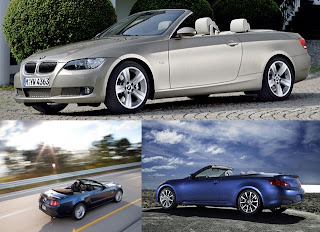
Handling:
Mustang: 87
The suspension on the GT is firmed up from the base Mustang, but it is still pretty soft -- even if well-damped. Nonetheless, the Mustang is well-balanced and roll is nicely controlled. Turn-in is also quite good, enhancing the fun at moderate cornering loads. The drawback of the softness is a somewhat disconnected feel. Also, the car moves around a bit more than normal as power is applied, which can be disconcerting as the pace quickens.
G37: 83
The G37 feels moderately firm, but this is definitely a car biased to understeer. You sense that rear roll stiffness is lower than the front, leading to the inside rear corner seeming to lift and the front outside corner having to dig in. Turn-in is acceptable.
328i: 89
We drove the normal suspension version of the 328i (a sport suspension is also available). Firmness is moderate, with good damping, and balance is exemplary. Turn-in is also good – probably as good as the Mustang, though the 328i doesn’t quite respond as noticeably. Compared with the Mustang and G37, the 328i rolls a little more, with the 328i giving the impression that it is carrying its weight higher.
Connectedness:
Mustang: 87
The Mustang is far from the most connected car, but somehow it works. That’s because it tells you what is happening in the chassis by large movements, not by subtle communications about tires and road surface. This isn’t ideal, but it can be very engaging. Engine and exhaust sounds are ample, so you can aurally keep track of the engine quite easily. Even more, you’ll enjoy running the car through the gears just to hear then engine note.
G37: 82
The G37 chassis is designed to isolate you from the sounds and happenings at road level. You can feel weight transfer when you are pushing the car above 6/10ths, and you can hear the engine when you wring it out, but you get the feeling the designers didn’t intend for you to know. The clunky transmission doesn’t help you get into the mood.
328i: 88
The 328i is soft-spoken but clear communicator. Tire activity is understandable and the chassis movements come through well enough. Because the chassis is firm and well-damped, you can develop a sense of flow with the 328i that isn’t quite as easily accomplished with the Mustang. Engine sound is restricted but usable for manual shifting.

Controls:
Mustang: 90
While the steering on the Mustang has less feel than we’d like, it loads up in an enjoyable way. The ratio is good, as well. The wheel looks beautiful, but we would have preferred leather at 9 and 3. The shifter is a joy, with a solid feel that makes you want to change gears. Clutch release is progressive and at the right level, and pedals are well-placed. Very good throttle response. We had a little bit of trouble finding an ideal driving position (and we dislike Ford’s aggressive headrest design).
G37: 80
The steering lacks feel, and the wheel is formless with oddly placed buttons. We did like the way the instrument nacelle moves with the wheel. The transmission is hard to love. Actually, it is hard to like. In D it is fine around town, though it finds itself in a higher than ideal gear too often. In DS it still hunts for the right gear, but sometimes this means the transmission is stuck too high, but even more often it just leaves the engine sitting at 4000 rpm for no apparent reason. Manual mode would seem to be your best choice and it is. But manual mode offers its own set of problems: shifter is too far back, upshift and downshift happen in the wrong direction, and shifts are not executed smoothly. Throttle response through all this is acceptable.
328i: 88
Steering weight is on the heavy side, which we liked but may not be to everyone’s taste. Steering feel is good. At times we thought the ratio was a little slow. The transmission is good for an automatic (manual is available). The transmission is okay in D, but in DS it works very well. Shifts happen in the right rev range to use the engine intelligently. In DS, the transmission does downshift in anticipation of the request for acceleration (nice), so this isn’t the mode for maximum smoothness around town. Manual mode is very good. The shifter moves in the right direction (pull left for M, pull back for upshift, push forward for downshift). The 328i has no paddles on the base car, but push/pull paddles are available with the sport package. Throttle response is good.
Comfort:
Mustang: 91
The ride comfort of the Mustang is very good for a sporting car. The relatively soft suspension isn’t soft in the luxury car sense, so ride on the road is sufficiently firm to be enjoyable. The Mustang also handles bumps pretty well. The live axle is occasionally upset, but much less than you might expect. The seats are also well designed for comfort, with good firmness and backrest shape.
G37: 90
The ride quality of the G37 is also quite good. Bumps might be a little more noticeable than on the Mustang, but the isolation that bothered us when driving aggressively helps out. That said, the chassis tuning isn’t as masterful as on the 328i, which smoothes out bumps a bit more. Seats on the G37 are comfortably shaped, and the firmness is chosen well. We’d rate the G37 seats just below the Mustang and about equal to the BMW seats.
328i: 91
This is not the top 3 Series for ride quality, but it is very similar to those standard bearers. While the 3 Series never floats, the damping takes care of bumps about as well as on any driver’s car. Occasionally on broken pavement we got the slightest sense that the chassis was a convertible (more flexible) not a coupe. The seats on the 328i are good, but lack the superior shape of the seats available on the sport package.

Mustang: 91
The Mustang feels solid. It has a weighty character, with controls that feel well made. This is backed up by the very attractive design and materials used on the interior. What the Mustang lacks is a sense of refinement. This isn’t a visual thing, it happens when driving. The sound is muscular, the chassis movements are coarse and the controls are the heaviest of our three cars. That character is part of the charm of the Mustang, but delicate it is not.
G37: 89
The G37 goes about its business in a smoother and more fine-grained way than the Mustang. But the G37 isn’t exactly what you’d call refined. The engine has a guttural sound and feel (deep in the background). The transmission loses its way at times. The car seems solid, but only somewhat above average in this area. This mixed message is backed up by the interior. The design seems pleasant and the materials are reasonably good, but nothing really special is going on and the colors and shapes don’t quite come together.
328i: 93
The 328i is the refinement leader in this group. The engine has been accurately described as jewel-like because it revs so smoothly. The transmission is also smooth, but not at the expense of responsiveness. The steering feels weighty and the car overall feels the most solid. The 328i is only let down by a somewhat bland and all-too-familiar dashboard design. The materials are good, and the controls work well, it’s just that the shapes are pretty conservative. Not the worst problem.

Source:http://www.nextautos.com/showdown-mustang-gt-infiniti-g37-and-bmw-328i-convertibles
Other Posts:
What The Meaning Of Sport Car Is
What The Meaning Of Sport Car Is?
Simply put, a sports car is any car/vehicle which is designed to run as quick as possible. Basically, it includes of four wheels, an engine, rudimentary brakes and at least one seat. Anything that does not make the car faster is omitted - things like a windshield, top, heater, passenger seat, spare tire, side windows and so forth. This photo of a Model T racer captures the very real meaning of what it means be a "sports car". Not much to it, is there?

Prior to War II, sports cars were usually expensive toys for the wealthy. Above are a Stutz Bearcat and a Duesenberg Model SJ, both of which would have fit right in with the Great Gatsby crowd. While more substantial that the early cars based on the Model T, neither was intended for every day use.
World War II introduced American soldiers to the MG TD and the Austin Healey Sprite. Agile and light in weight, they had the additional advantage of being affordable. G.I's bought them by the thousands and shipped them home to America. It wasn't long before these cars were being raced all across the United States.

With the British sports cars selling like hot cakes, it didn't take long for the American manufacturers to join in the fun. Chevrolet led the way with the exotic Corvette in 1953, while Ford introduced the Thunderbird in 1955. Ford actually dared to sell its car with a removable hard top, pushing the idea of a sports car into the future, as the idea of a sports car as a personal luxury car began to take hold in the marketplace. From that point on, the race to load the cars up with automatic transmissions, leather seats, power windows, power brakes, power steering and ponderous V-8 engines was in full swing.

As the American cars became more and more fixated on comfort and luxurious appointments, two manufacturers from across the Atlantic continued to pursue the idea of a sports car that was closer to the original concept. In 1963, Porsche introduced the 911 model. Light and lithe, with a 6 cylinder engine, it was a delight to drive and it immediately attracted a loyal following among enthusiasts. At about the same time, Jaguar brought its XK-E to America, where it caused quite a commotion. Often referred to as the most beautiful production car of all time, it also featured a 6 cylinder engine tucked away beneath that gorgeous and oh-so-sexy nose.

Also in 1963, Chevrolet introduced the all new Corvette Stingray, the most desireable of which were the so called "split window" coupes. The bar through the rear glass was supposed to make the car resemble the stingray for which it was named. But the design was expensive to produce and in 1964, Chevy switched to a single rear window design. Since the "split window" was only offered for one year, it remaines one of the most sought after Corvette models. In 2009, Chevrolet unveiled the mighty ZR-1 Corvette. With twin turbochargers, the car pumps out 625 horsepower and hustles to 60 mph in under 5 seconds. While it sellw for almost $100,000, its performance equals or exceeds that of exotics costing two and even three times as much. It is currently the pinnacle of American sports cars.
The idea of a sports car has changed dramatically since Henry Ford rolled out the first Model T. But the essence remains the same. A sports car is just down right fun to drive. It is a four wheel grin machine, one that makes you want to just go somewhere. And if you get lost along the way? Well, that sense of adventure is part of the sports car experience, isn't it?

After MG stopped producing the MGB in 1980, the magic era of the affordable sports car that began with the TD's and Sprites that our soldiers brought home with them after World War II came to an end. As the world struggled with oil embargoes and emission controls, the lure of owning a sports car dimmed considerably. But then in 1990. Mazda introduced the Miata, which was a deliberate attempt to re-create the affordable, two seater, open sports car again. My wife and I have had one for 6 years. Though its a 1994 model, it runs and drives like new. Its a sunny day car, no doubt about it. We average about 3,000 miles a year with the car. And at that rate, and given the Miata's reputation for reliability, it should be good for another 20 years before we need to replace it. Its the car we use to go get ice cream in the summer and pumpkins in the fall. Its our road trip to The Cape car. And it puts a grin on our face every time we drive it. I think that's what sports cars are really all about!
Source:
http://www.examiner.com/x-21840-Providence-Sports-Car-Examiner~y2009m9d1-What-is-a-sports-car
Other Posts:
Subscribe to:
Posts (Atom)










